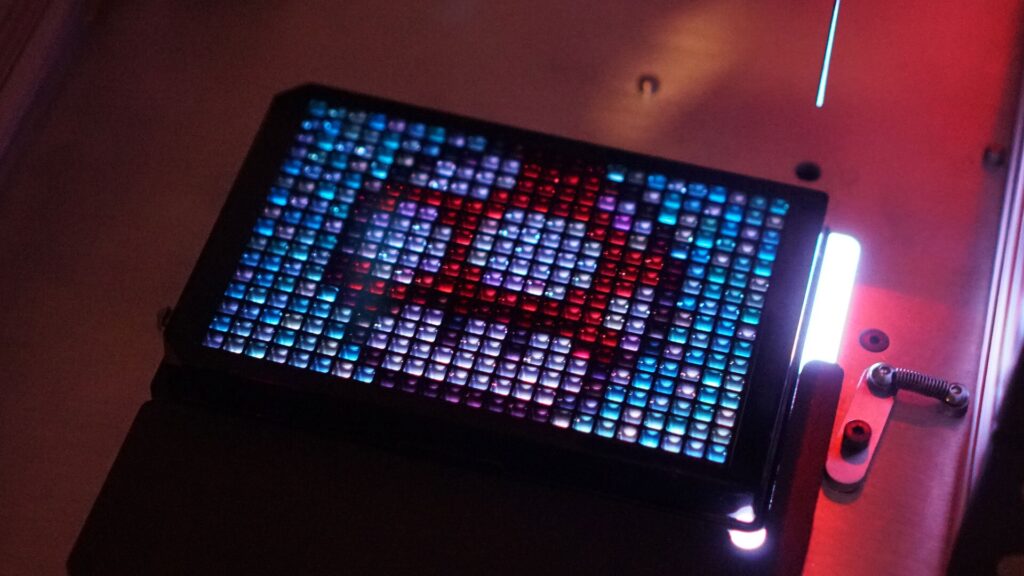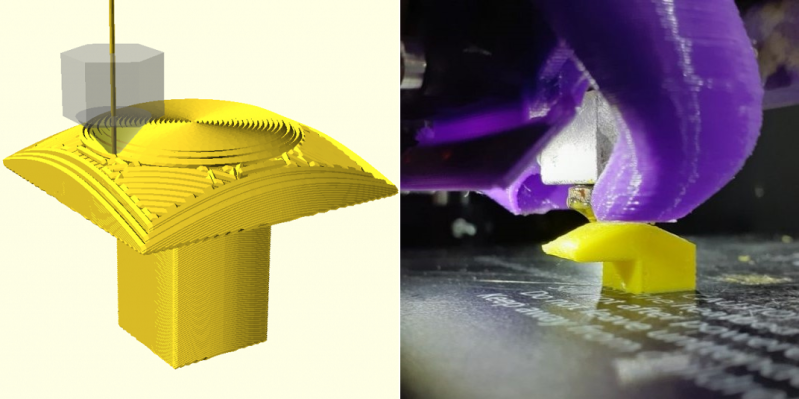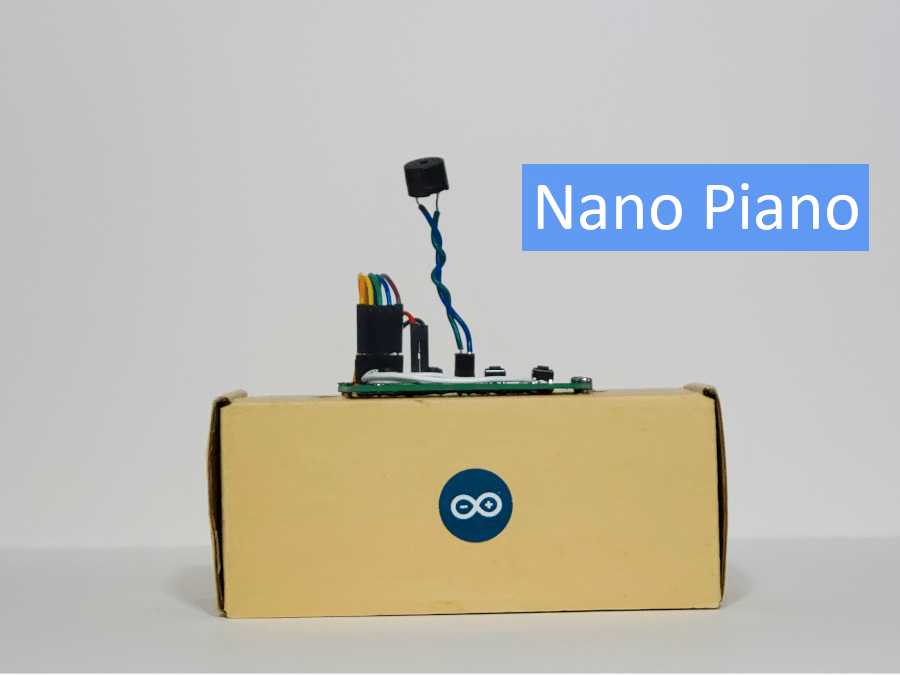Timer Camera X is a camera module based on ESP32, integrated with ESP32 chip and 8M-PSRAM. The camera (ov3660) with 3 million pixels , DFOV 66.5 ° and shoot 2048×1536 resolution photo, built-in 140mAh battery and LED status indicator, featuring ultra-low power consumption design. There is a reset button under the LED. Through RTC (BM8563), timing sleep and wake-up can be realized
Modern Jukebox – 3D Printed, using a RaspberryPI
A 3D-printed mini jukebox powered by Volumio. Streams your music, Pandora, Spotify and AirPlay. Sound-reactive LEDs dance to your music!

Building a Robot Dog; #1 Hardware, Inverse Kinematics
Sup guys it’s nic here, in this series I will share my journey to develop a robot dog! Hop along! Parts used for now: Arduino Uno, PCA9685 16-channel servo motor driver, MG996R servo motors.
Electroplating 3D Printed Parts for Great Strength
Resin 3D printers have a significant advantage over filament printers in that they are able to print smaller parts with more fine detail. The main downside is that the resin parts aren’t typically as strong or durable as their filament counterparts. For this reason they’re often used more for small models than for working parts, but [Breaking Taps] wanted to try and improve on the strength of these builds buy adding metal to them through electroplating.
Both copper and nickel coatings are used for these test setups, each with different effects to the resin prints. The nickel adds a dramatic amount of stiffness and the copper seems to increase the amount of strain that the resin part can tolerate — although [Breaking Taps] discusses some issues with this result.
While the results of electroplating resin are encouraging, he notes that it is a cumbersome process. It’s a multi-step ordeal to paint the resin with a special paint which helps the metal to adhere, and then electroplate it. It’s also difficult to ensure an even coating of metal on more complex prints than on the simpler samples he uses in this video.

These Electric Ice Skates Finally Make the Sport Effortless
You probably haven’t noticed this, but athletes tend to be in very good physical condition. That is because most sports require a high level of fitness. You’re going to have a hard time winning a 100-meter dash if you collapse from exhaustion after 20 meters of sprinting. If you’re out of shape like I am, then you’ll probably agree that it isn’t fair that we don’t get to join in the fun. Apparently Simon Sörensen, of the RCLifeOn YouTube channel, felt the same way, which is why he designed these electric ice skates to make the sport effortless.
Zach Frew’s Liquid Lite Brite creates low-res art out of liquid dye
As a child, chances are you came across a Lite-Brite at some point. The toy consisted of a light box with small plastic pegs that fit into a panel and lit up to form a picture. Drawing inspiration from that, mechatronics engineer Zach Frew thought “it would be cool to make a robot that consumes a digital image and outputs a watercolor painting.” What he came up with as a “first step along that path” is a homemade liquid handling workstation to dispense and mix a CMYK dye solution in a 384-well microplate “canvas.”
Liquid distribution is calculated with the help of a Python script that takes a 24×16 pixel image as input and assigns each pixel an RGB value. The “printing” is handled by the common RepRap configuration of an Arduino Mega and a RAMPS 1.4 shield, plus a PCA9685 expander chip. The X, Y, and Z axes move via stepper motors and rails, while color mixing is accomplished using five servo-actuated valves. A stepper-driven peristaltic pump is employed for liquid placement, producing low-resolution yet no less beautiful art.

3D Printing 90 degree Overhands with Non-Planar Slicing
When slicing a model for 3D printing, the part is divided into a stack of flat, 2D layers. But there’s an alternative in the form of non-planar slicing, where the layers can follow 3D curves. [Rene K. Mueller] took this a step further and successfully used non-planar slicing to print 90° overhangs on a normal Cartesian FDM printer.
Non-planar layers have been around for a while, but were generally limited to creating smooth curves without layer lines. The idea of using the technique for overhangs had been floating around in [Rene]’s head for a while, and he was spurred to action after seeing the rotating tilted nozzle printer featured here on Hackaday. The idea is only to have the outer edge of each layer overhang, by making each layer slope downward toward the overhang. [Rene] programmed a conic slicer algorithm for this purpose, which splits the model into dome-shaped layers, like an onion.

Hackboard 2 Is a $140 Windows 10 Pro Single-Board Computer
Powered by a dual-core Intel Celeron processor and 4GB of RAM, there’s also an Ubuntu version for $99.
The Raspberry Pi continues to be the most-popular choice for single-board computers, especially considering the very low price point. But what if you want a single-board computer capable of running Windows 10? The Hackboard 2 offers just that for a surprisingly low price.
Hackboard 2 was created by a team spread across Austin, London, and Shezhen. As The Hackboard website explains, the idea was formed very early in the coronavirus pandemic when Quantum Engineering CEO Mike Callow came up with the idea of “creating a small, low-cost, Windows-powered and Intel-based computer for children, parents, and educators who wouldn’t normally be able to afford one.”

How to reverse engineer & patch a Game Boy ROM
In this video, we patch a Game Boy ROM using Ghidra!
Nano Piano – An Ardiuno Based Nano Piano
A simple, small piano that is not only small as the name implies, but it runs off of the Arduino Nano Every.
Nano Piano is a four key piano that runs off of an Arduino Nano Every. This project is beginner friendly, and it is great if you are looking to get into Arduino or electronics as a whole. I will be going over everything you need to know to create this project. You get to decide how its assembled but I will be showing you all the electronics and things you need to make it work.

